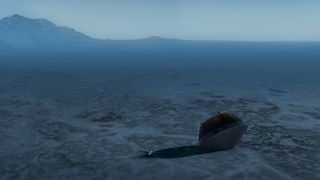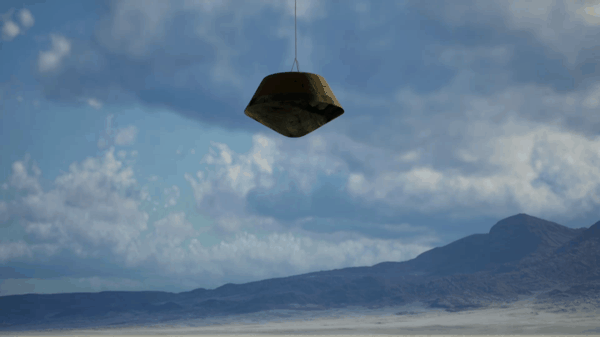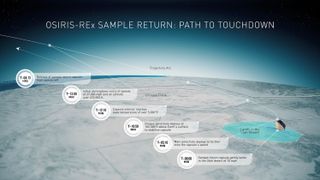What time is NASA's OSIRIS-REx asteroid sample return capsule landing on Sept. 24?
Each second of the capsule's descent has been calculated in anticipation for NASA's first asteroid sample return mission.
It's been seven years since the launch of NASA's OSIRIS-REx mission to collect and return samples of asteroid Bennu, and the long wait for the spacecraft's homecoming is nearly over.
OSIRIS-REx, short for Origins-Spectral Interpretation-Resource Identification-Security-Regolith Explorer, launched from NASA's Kennedy Space Center, in Florida, on September 8, 2016. The journey to rendezvous with Bennu took the spacecraft two years to complete, which were followed by another two years of scans while orbiting the asteroid.
The much-anticipated collection of material from Bennu's surface didn't occur until October 20, 2020, and it would be another three years until the spacecraft made its way back to Earth. That time is now, and the asteroid-sand in the hourglass of OSIRIS-REx's mission clock is sprinkling down to zero. The mission's asteroid sample return capsule is currently projected to land on Sunday (Sept. 24) at 8:55 a.m. MDT (10:55 a.m. EDT, 1455 GMT).
Related: Watch it live: OSIRIS-REx's asteroid sample will come down to Earth on Sept. 24.
Read more: How NASA's OSIRIS-REx will bring asteroid samples to Earth in 5 not-so-easy steps

What time will OSIRIS-REx land?

NASA and the OSIRIS-REx mission team have the spent the past several years monitoring the spacecraft's speed and trajectory, and have calculated its landing down to the minute.
A Sept. 10 firing of OSIRIS-REx's thrusters honed the course for its landing site at the Department of Defense's (DoD) Utah Test and Training Range (UTTR), in the western Utah desert. The remote, 36-mile by 8.5-mile (58-kilometer by 14-kilometer) area of land is bullseye for OSIRIS-REx's asteroid sample return capsule.
After tracking the capsule along its journey through Earth's atmosphere first using infrared cameras and then with radar stations on the ground at UTTR, mission operators will be able to pinpoint OSIRIS-REx's landing coordinates to within 30 feet (9 meters). The OSIRIS-REx return capsule is programed to deploy its main parachute about a mile (1.6 kilometers) above the Utah desert. If the spacecraft and return capsule experience a nominal separation and landing sequence, the capsule is expected to land five minutes after deployment of its main chute.
Get the Space.com Newsletter
Breaking space news, the latest updates on rocket launches, skywatching events and more!
Slowing the return capsule and its stowed asteroid sample to just 11 miles-per-hour (17.7 kilometers-per-hour), the parachute is scheduled to softly touchdown OSRIS-REx at 8:55 a.m. MDT (10:55 a.m. EDT, 1455 GMT).
Once the area is verified safe, ground teams will collect the pod and transport it to a secure temporary cleanroom nearby, and eventual transportation to NASA's Johnson Space Center, in Houston, Texas, for analysis and research.

Can I watch the OSIRIS-REx landing?
OSIRIS-REx's widespread and remote landing area make catching a view of the return capsule difficult, but not impossible. NASA is providing landing coverage beginning at 10 a.m. EDT (8 a.m. MDT, 1400 GMT), Sunday, Sept. 24 which will be available to stream here, at Space.com.
The space agency is also planning a Spanish-language version of the OSIRIS-REx landing, which will be available on the space agency's social media accounts at X, formerly known as Twitter, Facebook and YouTube. Streaming of the landing is expected to last until the asteroid sample return capsule arrives at the on-site cleanroom facility.
NASA has also scheduled a post-landing press conference to take place following the sample canister's arrival at the temporary cleanroom, which will also be streamed on the space agency's website, beginning at 5 p.m. EDT (3 p.m. MDT, 2100 GMT).
How long will the OSIRIS-REx landing take?

While live coverage of the landing doesn't begin until 10 a.m. EDT (8 a.m. MDT, 1400 GMT), OSIRIS-REx mission operators will begin their day much earlier. By 4 a.m. EDT or (2:00 a.m. MDT, 0800 GMT), the morning of Sept. 24, teams will be preparing to send final landing commands to the spacecraft, according to OSIRIS-REx's mission implementation systems engineer, Anjani Polit.
A "go/no-go" meeting will be held early Sunday to determine whether to proceed with the morning's landing, and initiate the separation command for OSIRIS-REx to release the sample return capsule. Assuming a unanimous "go" polling from team operators, OSIRIS-REx will release its asteroid sample container at precisely 6:42 a.m. EDT (4:42 a.m. MDT, 1042 GMT). It will be a little over four hours between then and the capsule's touchdown in Utah.
From there, the return pod, which doesn't include any type of maneuver controls, will be on a ballistic trajectory for its landing at UTTR. The OSIRIS-REx spacecraft will continue onward, soon after firing its thrusters to put the probe on course for a new target, the asteroid Apophis. The OSIRIS-REx mission will then change names to OSIRIS-APEX, short for OSIRIS-Apophis Explorer, and the surveyor will begin a six-year journey to Apophis, where it will remain in orbit for up to 18 months.
As for the OSIRIS-REx return capsule, NASA engineers have calculated every second of its return trajectory following spacecraft separation. A minute-by-minute schedule is listed below, including atmospheric reentry times and speeds, as well as drogue and main parachute deployments.
| TIME | SEQUENCE |
|---|---|
| 6:42 a.m. EDT (4:42 a.m. MDT, 1042 GMT) | OSIRIS-REx releases the asteroid sample container return capsule. |
| 7:02 a.m. EDT (5:02 a.m. MDT, 1102 GMT) | OSIRIS-REx spacecraft fires thrusters to set course away from Earth, and toward asteroid Apophis. |
| 10:42 a.m. EDT (8:42 a.m. MDT, 1442 GMT) | OSIRIS-REx return capsule enters Earth atmosphere at an altitude of 82 miles (132 kilometers), traveling 27,650 mph (44,498 kph). |
| 10:43 a.m. EDT (8:43 a.m. MDT, 1443 GMT) | OSIRIS-REx return capsule experiences highest temperatures, reaching 5,000 degrees Fahrenheit (2,760 degrees Celsius). |
| 10:44 a.m. EDT (8:44 a.m. MDT, 1444 GMT) | Deployment of the return capsule's drogue parachute, at 102,300 feet (31,181 meters) in altitude. |
| 10:45 a.m. EDT (8:45 a.m. MDT, 1445 GMT) | OSIRIS-REx spacecraft makes its closest approach to Earth, passing just 484 miles (779 kilometers) away. |
| 10:50 a.m. EDT (8:50 a.m. MDT, 1450 GMT) | Deployment of the return capsule's main parachute, at 5,050 feet (1,539 meters) in altitude. |
| 10:55 a.m. EDT (8:55 a.m. MDT, 1455 GMT) | Touchdown on Earth of the OSIRIS-REx asteroid sample return capsule, carrying material from the surface of Bennu. |
What if the OSIRIS-REx landing is unsuccessful?
In the event that Sunday morning's go/no-go meeting results in a "no-go," it won't mean the end of the world for OSIRIS-REx. Should a complication arise with the spacecraft's systems or the readiness status of of mission teams on the ground, the OSIRIS-REx team has a backup plan for landing NASA's asteroid samples.
Should the decision not to separate the OSIRIS-REx spacecraft from its sample pod become necessary, another opportunity to land exists two years from now. "We really don't want to do that," Polit told Space.com during the Sept. 15 episode of the This Week in Space podcast. "The spacecraft will be going closer to the sun than we'd like during that two-year time period," she said, alluding to the deleterious effects increased and extended exposure to the sun's radiation could have on the asteroid sample. "It's better to get it on the ground rather than having it sit in space and get heated up over the next two years."
Join our Space Forums to keep talking space on the latest missions, night sky and more! And if you have a news tip, correction or comment, let us know at: community@space.com.

Josh Dinner is Space.com's Content Manager. He is a writer and photographer with a passion for science and space exploration, and has been working the space beat since 2016. Josh has covered the evolution of NASA's commercial spaceflight partnerships, from early Dragon and Cygnus cargo missions to the ongoing development and launches of crewed missions from the Space Coast, as well as NASA science missions and more. He also enjoys building 1:144 scale models of rockets and human-flown spacecraft. Find some of Josh's launch photography on Instagram and his website, and follow him on Twitter, where he mostly posts in haiku.
-
davetapley FYI caption is wrong:Reply
> A diagram showing how SpaceX's first Starship orbital launch will work. (Image credit: Lockheed Martin)
